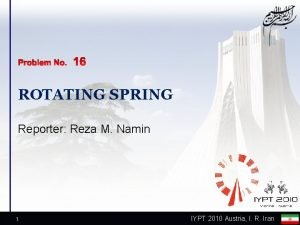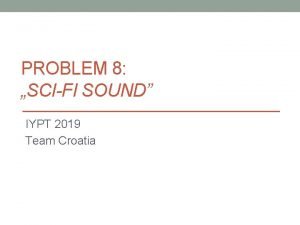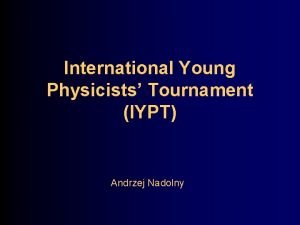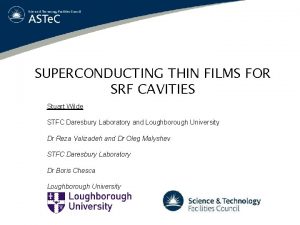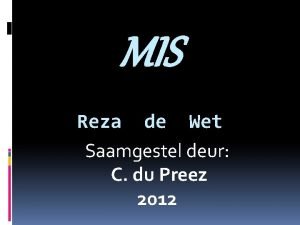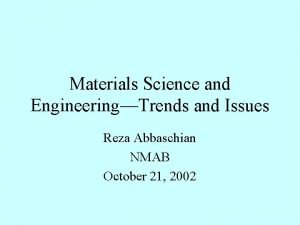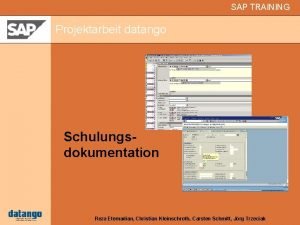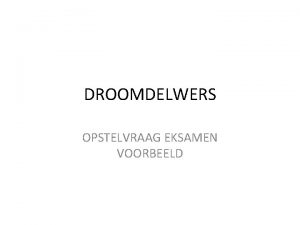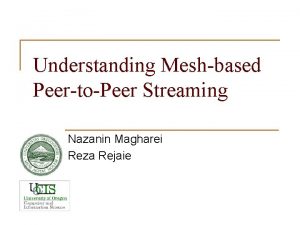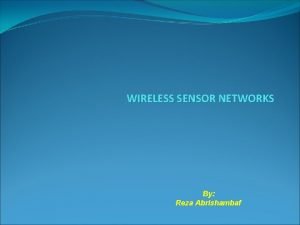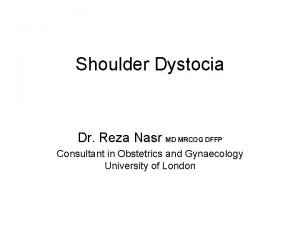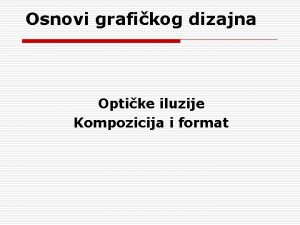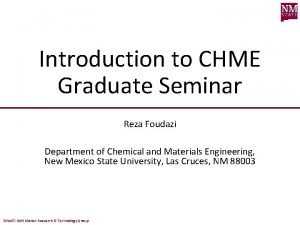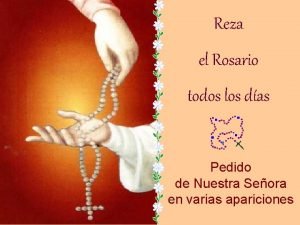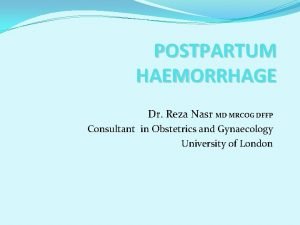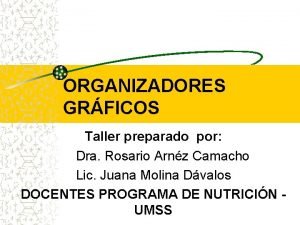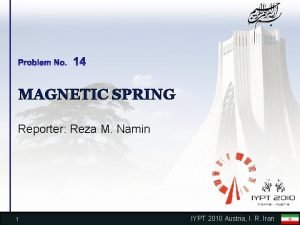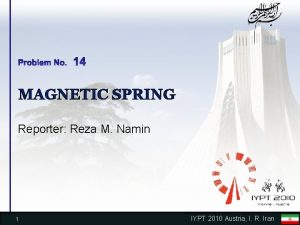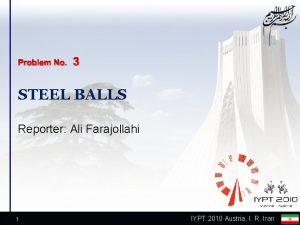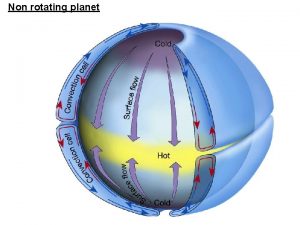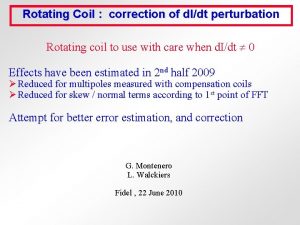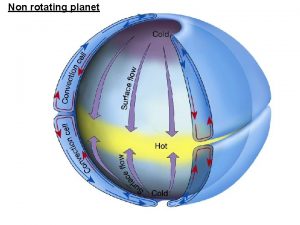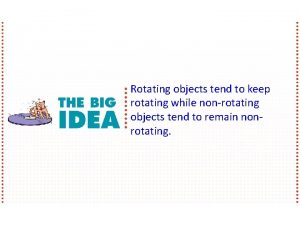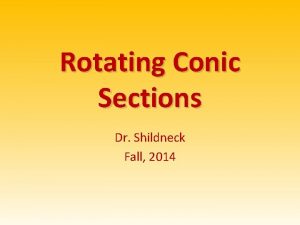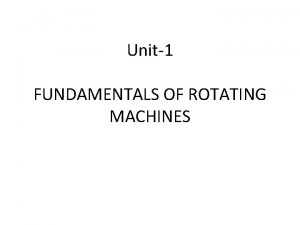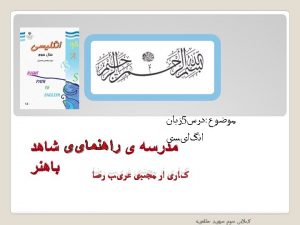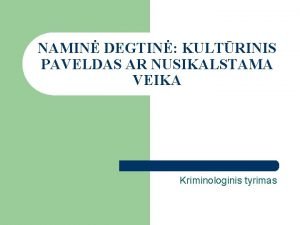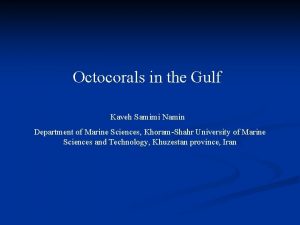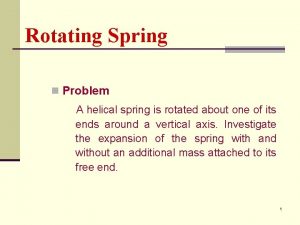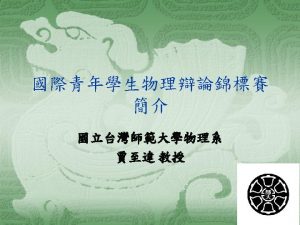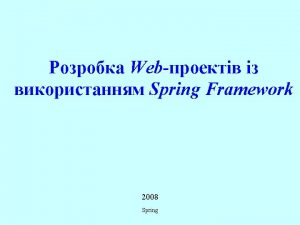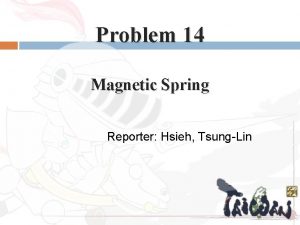ROTATING SPRING Reporter Reza M Namin 1 IYPT





























- Slides: 29

ROTATING SPRING Reporter: Reza M. Namin 1 IYPT 2010 Austria, I. R. Iran

The problem • A helical spring is rotated about one of its ends around a vertical axis. • Investigate the expansion of the spring with and without an additional mass attached to it’s free end. 2 IYPT 2010 Austria, I. R. Iran

Main approach • Theory – – Background Theory base Developing the equations Numerical solution • Experiment – Setup – Parameters, results and comparison • Conclusion 3 IYPT 2010 Austria, I. R. Iran

Theory - Background • Act of a spring due to tensile force: – Hook's law: F = k ∆L • F: Force parallel to the spring • k: Spring constant • ∆L: Change of length – A spring divided to n parts: • F = n k ∆L • μ = k L remains constant • Circular motion – a = r ω2 • a: Acceleration • r: Distance from the rotating axis • ω: Angular velocity 4 IYPT 2010 Austria, I. R. Iran

Theory - Base • Effective parameters: – – – ω: Angular velocity λ : Spring liner density = m / l M: Additional mass μ : Spring module = k l l, l 1, l 2: Spring geometrical properties l 1 l l 2 M 5 IYPT 2010 Austria, I. R. Iran

Theory - Base • Looking for the stable condition in the rotating coordinate system – Accelerated system → figurative force • Acting forces: – Gravity – Spring tensile force – Centrifugal force 6 IYPT 2010 Austria, I. R. Iran

Theory – Developing the equations • Approximation in mass attached conditions: – Considering the spring to be weightless: Fs ω Fc Mg y l M x 7 IYPT 2010 Austria, I. R. Iran

Theory – Developing the equations • Exact theoretical description: – Problem: The tension is not even all over the spring… M – Solution: Considering the spring to be consisted of several small springs. 8 IYPT 2010 Austria, I. R. Iran

Theory – Numerical solution • Numerical method – Finite-volume approximation: • Converting the continuous medium into a discrete medium M Ti-1 fc w Ti+1 – Transient (dynamic unsteady) method – Programming developed with QB. 9 IYPT 2010 Austria, I. R. Iran

Theory – Numerical solution Mesh independency check 0. 45 n: Number of mesh points Spring length (m) 0. 4 As n increases, the result will approach to the correct answer 0. 35 0. 3 0. 25 0. 2 0. 15 80 10 90 100 Angular velocity (s-1) 110 120 n=5 n = 10 n = 15 n = 20 n = 25 IYPT 2010 Austria, I. R. Iran

Theory – Numerical solution Tension in different points of the spring with different additional mass amounts: 1. 4 m=0 m = 2. 5 g m = 5 g 1. 2 Tension (N) 1 0. 8 0. 6 0. 4 0. 2 0 0 11 2 4 6 8 10 Position in the spring (cm) 12 14 16 IYPT 2010 Austria, I. R. Iran 18

Experiment • Finding spring properties – Direct measurement: Mass & lengths – Suspending weights with the spring to measure k and μ • Changing the angular velocity, measuring the expansion – Change of the angular velocity with different voltages – Measuring the angular velocity with Tachometer – Measuring the length of the rotating spring using a high exposure time photo 12 IYPT 2010 Austria, I. R. Iran

Experiment setup The motor, connection to the spring and the sensor sticker 13 IYPT 2010 Austria, I. R. Iran

Experiment setup The rotating spring and tachometer 14 IYPT 2010 Austria, I. R. Iran

Experiment setup Hold and base 15 IYPT 2010 Austria, I. R. Iran

Experiment setup All we had on the table 16 IYPT 2010 Austria, I. R. Iran

Experiments Suspending weights with the spring Finding k and using that to find μ 2. 5 Attached weight (N) 2 R 2 = 0. 9992 1. 5 →K = 33. 78 N/m 1 →μ = K l = 1. 824 N 0. 5 0 0 -0. 5 17 0. 02 0. 04 0. 06 0. 08 0. 1 Spring length (m) IYPT 2010 Austria, I. R. Iran 0. 12

Experiments Expansion increases with increasing angular velocity 18 IYPT 2010 Austria, I. R. Iran

Experiments Measurement of length in different angular velocities Comparison with the numerical theory 25 Spring length (cm) 20 Experiments Numerical result 15 10 λ =0. 148 kg/m μ =1. 824 N l 1 =1. 5 cm l 2 = 1. 7 cm 5 0 0 10 20 30 40 50 60 70 80 Angular velocity (Rad / s) 19 IYPT 2010 Austria, I. R. Iran 90

Experiments Comparing the shape of the rotating spring in theory and experiment 0. 0000 -0. 0100 0. 0500 0. 1000 0. 1500 0. 2000 0. 2500 -0. 0200 -0. 0300 -0. 0400 -0. 0500 -0. 0600 -0. 0700 -0. 0800 -0. 0900 -0. 1000 λ =0. 103 kg/m μ =0. 369 N l = 16. 3 cm l 1 =1 cm ω = 120 RPM 20 IYPT 2010 Austria, I. R. Iran 0. 3000

Experiments Investigation of the l-ω plot within different initial lengths 50 λ =0. 103 kg/m μ =0. 369 N l 1 =1 cm 45 40 Spring length (cm) 35 30 Experiment: l = 16. 3 Experiment: l = 14 Experiment: l = 11. 5 Experiment: l = 7. 2 Numerical: l = 16. 3 Numerical: l = 14 Numerical: l = 11. 5 Numerical: l = 7. 2 25 20 15 10 5 0 100 21 150 200 250 Angular velocity (RPM) 300 IYPT 2010 Austria, I. R. Iran 350

Experiments Comparison between the physical experiments, numerical results and theoretical approximation within different additional masses Spring length (cm) 45 λ =0. 103 kg/m μ =0. 369 N l = 5. 4 cm l 1 =1 cm Exp M = 0 40 Exp M = 5 g 35 Exp M = 10 g Exp M = 15 g 30 Num M = 0 25 Num M = 5 g 20 Num M = 10 g Num M = 15 g 15 Appx M = 0 Appx M = 5 g 10 Appx M = 10 g 5 Appx M = 15 g 0 0 22 50 100 150 200 250 300 Angular velocity (RPM) 350 400 IYPT 2010 Austria, I. R. Iran 450

Conclusion • According to the comparison between theories and experiments we can conclude: – In case of weightless spring approximation: 23 IYPT 2010 Austria, I. R. Iran

Conclusion • In general, the numerical method may be used to achieve precise description and evaluation. • Some of the results of the numerical method are as follows: 24 IYPT 2010 Austria, I. R. Iran

Conclusion Numerical solution results Change of the spring hardness 0. 6 miu = 0. 1 miu = 0. 2 Spring length (m) 0. 5 miu = 0. 3 miu = 0. 5 0. 4 0. 3 0. 2 λ =0. 1 N l = 10 cm l 1 =1 cm 0. 1 0 0 25 50 100 150 200 Angular velocity (RPM) 250 IYPT 2010 Austria, I. R. Iran 300

Conclusion Numerical solution results Change of spring density 0. 5 Landa = 0. 05 0. 45 Landa = 0. 1 0. 4 0. 35 Landa = 0. 15 0. 3 Landa = 0. 25 0. 2 0. 15 μ =0. 3 N l = 10 cm l 1 =1 cm 0. 1 0. 05 0 0 50 100 150 200 250 300 IYPT 2010 Austria, I. R. Iran 350

Conclusion Numerical solution result Change of initial length 0. 4 l = 8 cm 0. 35 l = 10 cm Spring length (m) 0. 3 l = 12 cm 0. 25 l = 14 cm 0. 2 0. 15 0. 1 λ =0. 2 kg/m μ =0. 3 N l 1 =1 cm 0. 05 0 0 50 100 150 Angular velocity (RPM) 200 IYPT 2010 Austria, I. R. Iran 250

Conclusion Numerical solution results Change in additional mass 0. 5 m=0 0. 45 m = 5 g Spring length (m) 0. 4 m = 10 g 0. 35 m = 15 g 0. 3 0. 25 0. 2 0. 15 λ =0. 2 kg/m μ =0. 3 N l = 10 cm l 1 =1 cm 0. 1 0. 05 0 0 20 40 60 80 100 120 Angular velocity (RPM) 140 160 IYPT 2010 Austria, I. R. Iran 180

Thank you IYPT 2010 Austria, IYPT National 2010 Austria, team of I. R. Iran
 Reza namin
Reza namin Iypt 2019 problems
Iypt 2019 problems International young physicists' tournament
International young physicists' tournament Pamukod halimbawa
Pamukod halimbawa Ang damit namin ay magkasingkulay
Ang damit namin ay magkasingkulay Tula pilipinas
Tula pilipinas Dula kahulugan
Dula kahulugan Four seasons korean movie
Four seasons korean movie Months in the spring
Months in the spring Reza valizadeh
Reza valizadeh Mis reza de wet powerpoint
Mis reza de wet powerpoint Reza abbaschian
Reza abbaschian Datango trainer
Datango trainer Droomdelwers opsomming
Droomdelwers opsomming Reza khanbilvardi
Reza khanbilvardi Reza rejaie
Reza rejaie Reza abrishambaf
Reza abrishambaf Helperr mnemonic
Helperr mnemonic Reza entezari maleki
Reza entezari maleki Gloria oração
Gloria oração Reza curtmola
Reza curtmola Uokvirena kompozicija
Uokvirena kompozicija Reza foudazi
Reza foudazi Rosario al corazón de jesús
Rosario al corazón de jesús Muhammad reza kahar aziz
Muhammad reza kahar aziz Reso por ti
Reso por ti Reza misterio
Reza misterio You finish your homework last night
You finish your homework last night Dr reza nasr
Dr reza nasr Organizador visual de los misterios del santo rosario
Organizador visual de los misterios del santo rosario
